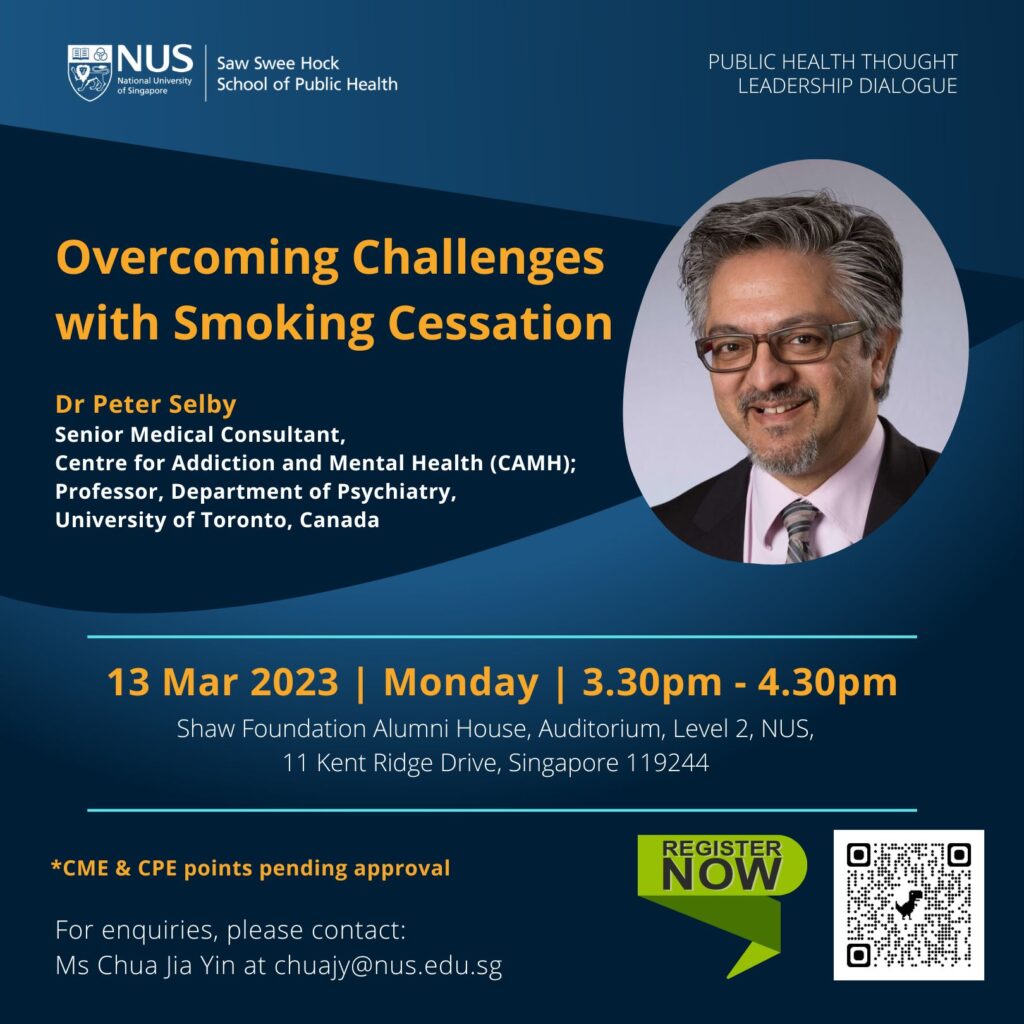Public Health Thought Leadership Dialogue: Overcoming Challenges with Smoking Cessation
Date:
Monday, 13 Mar 2023
Time:
3:30pm – 4:30pm (Registration opens at 3pm)
Venue:
Shaw Foundation Alumni House, Auditorium, Level 2, NUS, 11 Kent Ridge Drive, Singapore 119244
Session Chair

Dr Peter Selby
Senior Medical Consultant, Centre for Addiction and Mental Health (CAMH)
Professor, Department of Psychiatry, University of Toronto, Canada
Prof Peter Selby is a Clinician Scientist and Senior Medical Consultant at Centre for Addiction and Mental Health (CAMH). He is the Interim Vice-Chair of Research for the Department of Family and Community Medicine and holds the Dr. Barnett & Beverley Giblon Professorship in Family Medicine Research at the University of Toronto. He is a Clinician Scientist and Director of the Mental Health and Addictions Division in the Department of Family and Community Medicine. He is also a Professor in the Department of Psychiatry and in the Dalla Lana School of Public Health at the University of Toronto. He is also a full member of the School of Graduate Studies through the Dalla Lana School of Public Health and the Institute of Medical Sciences at the University of Toronto.
Prof Selby’s research focus is innovative methods to understand and treat addictive behaviours and their comorbidities. He also uses technology to combine clinical medicine and public health methods to scale up and test health interventions. His cohort of 280,000+ treated smokers in Ontario is an example. His most recent program of research utilizes a Learning Health Systems approach to investigate how technology enabled collaborative care can enhance the delivery of evidence-based interventions to the patient while providing a more satisfying experience of care for both patient and provider.


